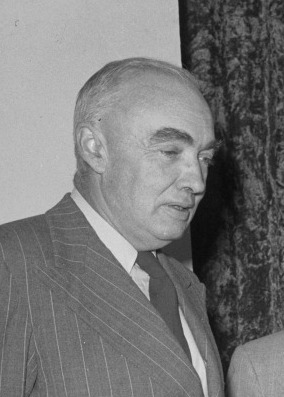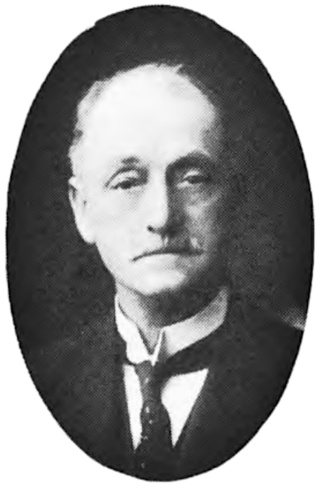Related Research Articles

Edward Bertram Johnston, known as Bertie Johnston, was the Western Australian Legislative Assembly member for Williams-Narrogin from 1911 to 1928, and a Senator from 1929 until 1942. His resignation from the Australian Labor Party in 1915 made possible the defeat of John Scaddan's Labor government in Western Australia.

Sir Charles George Latham, often shortened to simply C. G. Latham, was an Australian politician, former leader of the opposition in Western Australia and the 10th President of the Western Australian Legislative Council. Latham served over twelve years as leader of the state's Country Party, and over thirty years in the Parliament of Western Australia. Latham also served roughly ten months in the Federal Parliament, as a Senator for Western Australia.

The National Party of Australia (WA) Inc, branded The Nationals WA, is a political party in Western Australia. It is affiliated with the National Party of Australia, but maintains a separate structure and identity. Since the 2021 state election, the Nationals WA is the senior party in an opposition alliance with the WA Liberal Party in the WA Parliament. Prior to the election, the National Party was sitting in the crossbench, and the Liberal Party was the sole opposition party. The election resulted in the National Party winning more seats than the Liberal Party, and gaining official opposition status. Under the opposition alliance, the National Party leader and deputy leader would be the opposition leader and deputy opposition leader, respectively, the first since 1947, and each party would maintain their independence from each other.
This is a list of members of the Western Australian Legislative Assembly between the 1939 election and the 1943 election, together known as the 17th Parliament.
This is a list of members of the Australian Senate from 1941 to 1944. Half of its members were elected at the 23 October 1937 election and had terms starting on 1 July 1938 and finishing on 30 June 1944; the other half were elected at the 21 September 1940 election and had terms starting on 1 July 1941 and finishing on 30 June 1947. The process for filling casual vacancies was complex. While senators were elected for a six-year term, people appointed to a casual vacancy only held office until the earlier of the next election for the House of Representatives or the Senate.

Elections were held in the state of Western Australia on 15 February 1936 to elect all 50 members to the Legislative Assembly. The Labor Party, led by Premier Philip Collier, won a second term in office against the Country and Nationalist parties, led by Opposition Leader Charles Latham and Norbert Keenan respectively.

Arthur Frederick WattsCMG was an Australian politician who served in the Western Australian Legislative Assembly from 1935 to 1962, including as leader of the opposition and deputy premier of Western Australia.
Sir Robert Ross McDonald QC was an Australian politician who was a member of the Legislative Assembly of Western Australia from 1933 to 1950, representing the seat of West Perth. He served as leader of the Nationalist Party from 1938 to 1945, and of the Liberal Party from 1945 to 1946, during the period when those parties were the junior partners in the coalition with the Country Party.

Alfred Napoleon Piesse was an Australian politician who served as a member of the Legislative Assembly of Western Australia from 1911 to 1924, representing the seat of Toodyay. He joined the Country Party upon its formation in 1914, and served as state deputy leader from 1915 to 1921, initially under Francis Willmott and then under Tom Harrison.

Sir Norbert Michael Keenan QC was an Australian lawyer and politician who was a member of the Legislative Assembly of Western Australia from 1905 to 1911 and again from 1930 to 1950. He was the leader of the Nationalist Party from 1933 to 1938, during the time when it was the junior partner in the coalition with the Country Party. Keenan had earlier served as a minister in the government of Newton Moore and the second government of Sir James Mitchell.
Charles Collier Perkins was an Australian politician who was a Country Party member of the Legislative Assembly of Western Australia from 1942 until his death. He served as a minister in the government of Sir David Brand.
Norman Eric Baxter was an Australian politician who was a member of the Legislative Council of Western Australia from 1950 to 1958 and again from 1960 to 1983. He was a minister in the government of Sir Charles Court.

Arnold Edmund Piesse was an Australian politician who served as a member of the Legislative Assembly of Western Australia from 1909 to 1914 and again from 1930 until his death, on both occasions representing the seat of Katanning.
The 1991 Floreat state by-election was a by-election for the seat of Floreat in the Legislative Assembly of Western Australia held on 20 July 1991. It was triggered by the resignation of Andrew Mensaros on 16 May 1991, due to ill health. He died before the by-election was held. The election was won by an independent candidate, Liz Constable, who finished with 58.94 percent of the two-candidate-preferred vote. Constable became the first woman to win election to the Parliament of Western Australia as an independent, and only the third woman overall to win a by-election.
The 1990 Cottesloe state by-election was a by-election for the seat of Cottesloe in the Legislative Assembly of Western Australia held on 11 August 1990. It was triggered by the resignation of Bill Hassell on 28 June 1990. The Liberal Party retained Cottesloe at the election with an increased majority, with Colin Barnett securing 70.26 percent of the two-party-preferred vote. The Labor Party did not field a candidate.
A by-election for the seat of Claremont in the Legislative Assembly of Western Australia was held on 11 June 1902. It was triggered by the resignation of William Sayer on 26 May. John Foulkes, a prominent local lawyer, won the election with 40.4 percent of the vote. Of the other four candidates, three entered parliament themselves at later dates.
William Patrick was an Australian politician who was a Country Party member of the Legislative Assembly of Western Australia from 1930 to 1943, representing the seat of Greenough. He was deputy leader of the Country Party from 1936 to 1943.
Henry Kennedy Maley was an Australian politician who was a Country Party member of the Legislative Assembly of Western Australia from 1917 to 1924 and again from 1929 to 1930. He was the state leader of the Country Party from 1922 to 1923, and a minister in the government of Sir James Mitchell from 1921 to 1924.
A by-election for the seat of Boulder in the Legislative Assembly of Western Australia was held on 4 December 1948. It was triggered by the death of Philip Collier, a former premier, on 18 October 1948. The Labor Party retained the seat at the election, with Charlie Oliver winning 78.9 percent of the first-preference vote.
A by-election for the seat of Ascot in the Legislative Assembly of Western Australia was held on 13 November 1971. It was triggered by the death of Merv Toms, the serving Labor member and Speaker of the Legislative Assembly, on 8 October 1971.
References
- 1 2 Charles George Latham, Biographical Register of Members of the Parliament of Western Australia. Retrieved 23 February 2017.
- ↑ Black, David; Prescott, Valerie (1997). Election statistics, Legislative Assembly of Western Australia, 1890-1996. Perth, Western Australia: Parliamentary History Project and Western Australian Electoral Commission. p. 363. ISBN 0-7309-8409-5.
- ↑ Charles Collier Perkins, Biographical Register of Members of the Parliament of Western Australia. Retrieved 23 February 2017.
- ↑ Alfred George Reynolds, Biographical Register of Members of the Parliament of Western Australia. Retrieved 23 February 2017.